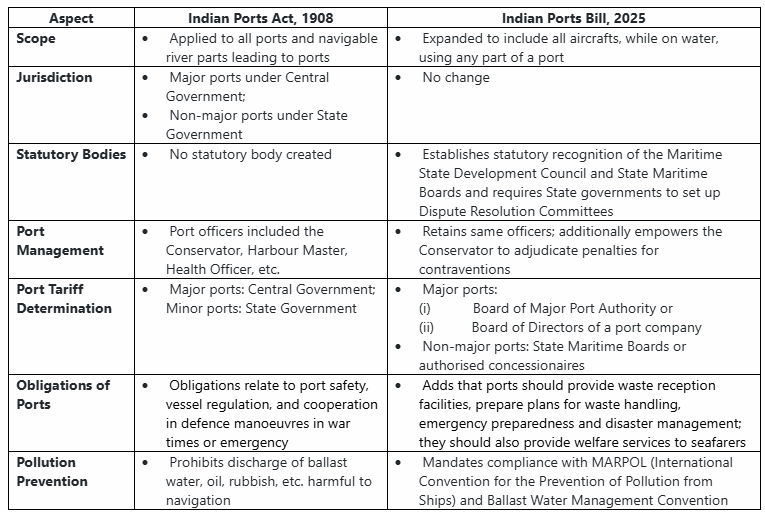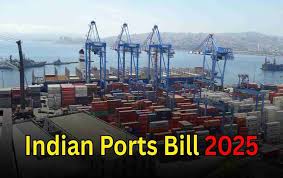SYLLABUS
GS-2: Parliament and State legislatures—structure, functioning, conduct of business, powers & privileges and issues arising out of these.
GS-3: Infrastructure: Ports
Context:
Recently, the Rajya Sabha passed the Indian Ports Bill, 2025, replacing the Indian Ports Act of 1908.
More on the News
- The legislation was originally introduced in the Lok Sabha.
- The legislation has already been cleared by the Lok Sabha, will soon be sent for Presidential assent.
- It is expected to transform governance at Indian ports, strengthen Centre–State coordination for port-led development and boost investor confidence in a sector crucial to the country’s trade ambitions.
Key provisions of the new Bill
• The Bill establishes the Maritime State Development Council (MSDC) as a statutory consultative body to strengthen coordination between the Centre and coastal States.
• The MSDC will be responsible for preparing a National Perspective Plan to promote the integrated development of ports.
• Coastal States will be given the authority to form State Maritime Boards, ensuring uniformity and transparency in the governance of India’s 12 major and over 200 non-major ports.
- The Bill gives legal recognition to all State Maritime Boards created by coastal states. These Boards will manage and regulate non-major ports in their states.
• For major ports, the tariff will be decided by either the Board of Major Port Authority or the Board of Directors if the port is registered as a company.
• For non-major ports, the tariff will be fixed by the State Maritime Board or an authorised concessionaire.
• The Bill provides for the creation of Dispute Resolution Committees (DRC) to offer timely, sector-specific solutions.
- Appeals against orders of the DRC will lie before the High Court. Civil courts will have no jurisdiction in the matters entrusted to the DRC.
• The legislation requires ports to comply with global environmental conventions such as MARPOL and Ballast Water Management, while also maintaining effective emergency preparedness systems.
• The bill decriminalises certain offences and makes them punishable with a monetary penalty instead. It also introduces compounding for all first-time contraventions.
• A strong focus is placed on digitalisation, with initiatives like a Maritime Single Window and advanced vessel traffic systems aimed at improving efficiency, removing bottlenecks and reducing operational costs.
Comparison between 1908 Act and 2025 Bill

Key Significance of the Legislature
- It positions India’s port governance on par with leading global frameworks (Singapore, South Africa, EU, USA).
- It strengthens cooperative federalism through Centre–State collaboration.
- It enhances trade competitiveness and promotes a sustainable maritime economy.
- It marks India’s transition from catch-up mode to global maritime leadership.
Source:


